The Indian Trees subcontinent has a rich and varied flora. The diversity of the flora is mainly due to high rainfall, temperature variations, aridity, and other climatic conditions prevalent in this region.
As a result of this amazing climate, many different species of trees can call this lush and vibrant country home.
Here are 9 of some of the most beautiful trees that grow in India.
1. Chir Pine

Starting off our list is the Chir Pine tree. Also known as the Longleaf Indian Pine, showing just how much this plant is tied to the country, Chir pine trees are found mainly in Indian Himalayan regions.
The species is found in Western Ghats, Eastern Ghats, Southern Himalayas, North East India, and parts of Myanmar. They grow up to 10 meters tall and are classified as “rarest endangered” under IUCN Red List.
As you can imagine for a tree on this list, it is one of the rarest types of pines growing in the world. This species is considered vulnerable to extinction due to its restricted distribution.
This species is also known for its medicinal properties. In Ayurveda, this species is used for treating fever, pain, and inflammation.
The wood of this tree is sometimes used for furniture, flooring, and firewood. Chir pine wood is resistant to termites, moisture, and insects. It is also used for making boats, doors, and window frames.
2. Teak
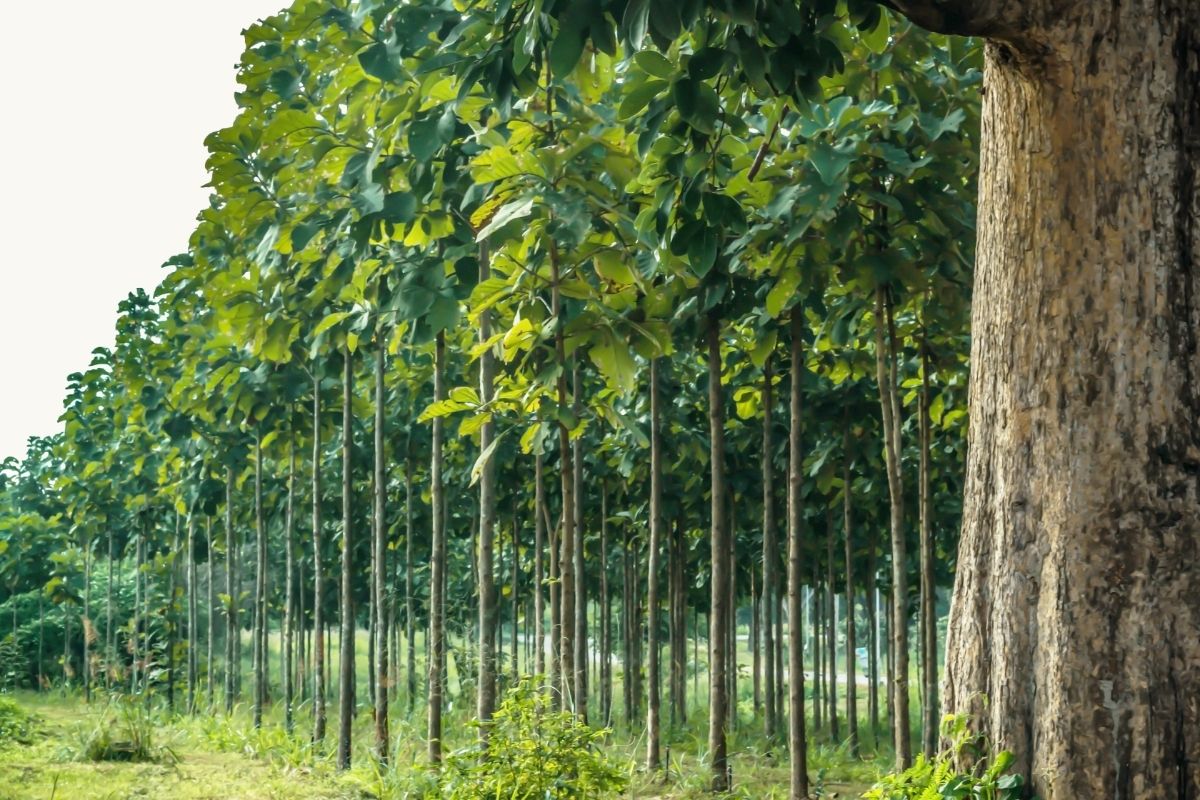
Another tropical plant from the Indian subcontinent, teak is a type of hardwood deciduous tree that is native to both Bangladesh and India.
Whilst this tree can be found all across the world today, from the Caribbeans to Africa, South East Asia is the original home of this beautiful plant.
This tropical tree can grow as tall as 40 meters (or 131 feet). The wood coloration you’re most likely to find on this plant is a brown-gray hue.
The tree’s green foliage also produces small clusters of bright white flowers, though light pink variants have been known to be found in the wild too. These trees are pollinated by both insects and by the wind.
This tree produces natural oils that help give the plant a natural resistance to wear and erosion from the elements, as well as making it very durable.
For this reason, teak trees are often grown in plantations to become furniture that is exported across the world.
3. Indian Mahogany

A mahogany tree is a slow-growing tropical evergreen tree native to India and Sri Lanka. Although its fruit is edible, it is used primarily for its wood.
The tree itself grows up to thirty feet tall and produces large leaves and small red flowers.
Mahogany trees grow well in subtropical climates and can withstand a wide range of temperatures, making them perfect for a country that is as ecologically and geographically varied as India.
They do require moderate amounts of water and fertilizer. The tree can tolerate drought conditions, but does better in full sunlight.
It takes about 20 years before the trees produce mature timber. If they are not cut down or felled by other means, Indian Mahogany can live for up to 350 years in some cases!
Indian Mahogany tree lumber also provides many wonderful products such as furniture, flooring, cabinets, building materials, and musical instruments.
Related: 25 Unique Indian Plants (Including Pictures)
4. Neem

For a mahogany relative of the previous entry, we turn to the Neem tree, also known as the Indian Lilac.
The neem tree is native to tropical regions of Asia and Africa. The leaves of this tree were traditionally used for medicinal purposes.
They contain many nutrients and are effective against various diseases such as malaria, cough, diarrhea, stomach ulcers, fever, diabetes, and skin infections.
Neem trees are often planted in parks and gardens to beautify the environment. In addition, they provide shade and protect plants from pests.
In recent years, neem oil has gained popularity among consumers due to its numerous health benefits. This oil contains phytochemicals that are beneficial for human health.
These phytochemicals include tannins, flavonoids, triterpenes, sterols, and alkaloids.
Neem oil is even commonly used in some places to treat wounds, cuts, burns, and insect bites. It can also be applied topically to treat scalp problems, dandruff, and lice.
5. Gulmohar
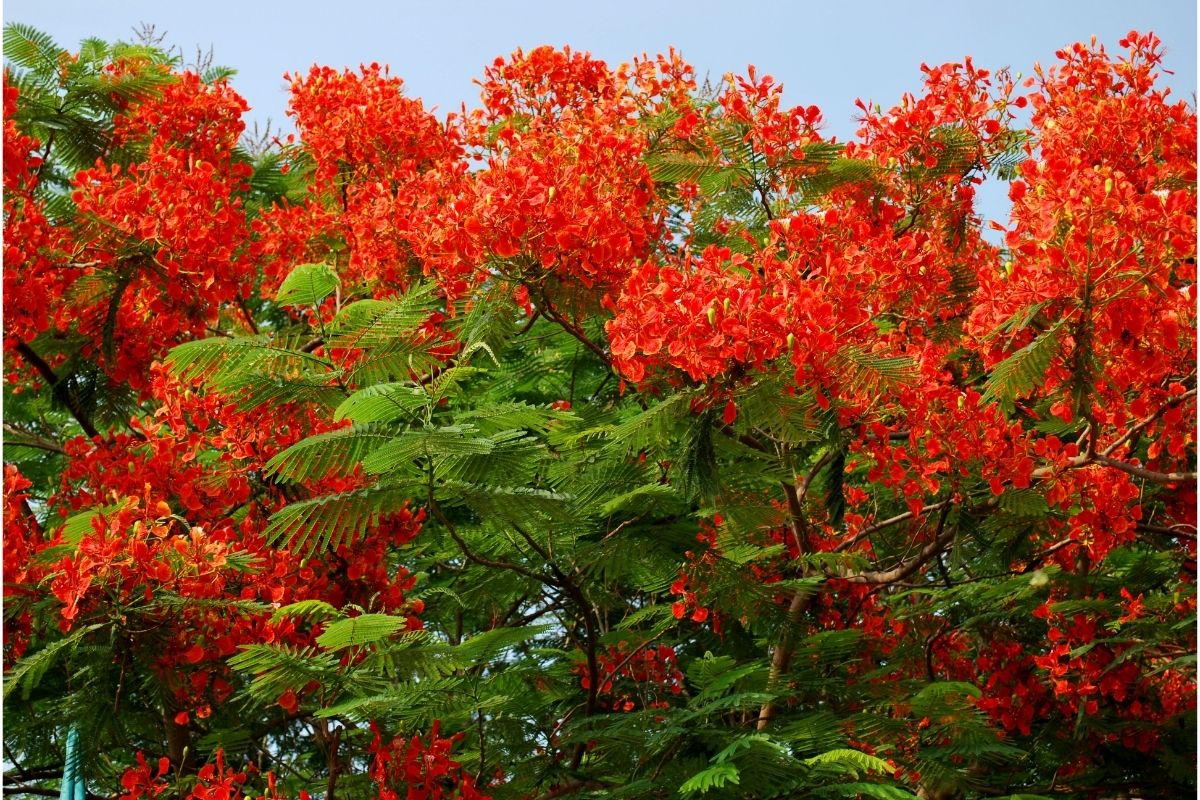
Whilst native to the island of Madagascar, the Gulmohar tree has since become naturalized to the Indian subcontinent’s weather and climate too.
Also known as a Mayflower tree in India and the surrounding areas, the Gulmohar is a large shrub native to India that grows up to 10 meters tall.
Its leaves droop downwards and its flowers bloom on stalks. The flower color ranges from white to pinkish purple, though the color most associated with this tree is red.
It is one of the most popular trees in India and is often seen in many places, including Uttar Pradesh, Punjab, Maharashtra, Madhya Pradesh, Gujarat, Rajasthan, Karnataka, and Kerala.
The wood of this tree is extremely durable and heavy. As such, it’s used for construction and furniture. It is also used for making boats.
These are just some reasons why this tree is cultivated across the world, including in India.
Some people believe that eating the fruit of this tree also helps prevent diseases such as diabetes and hypertension too.
6. Banyan
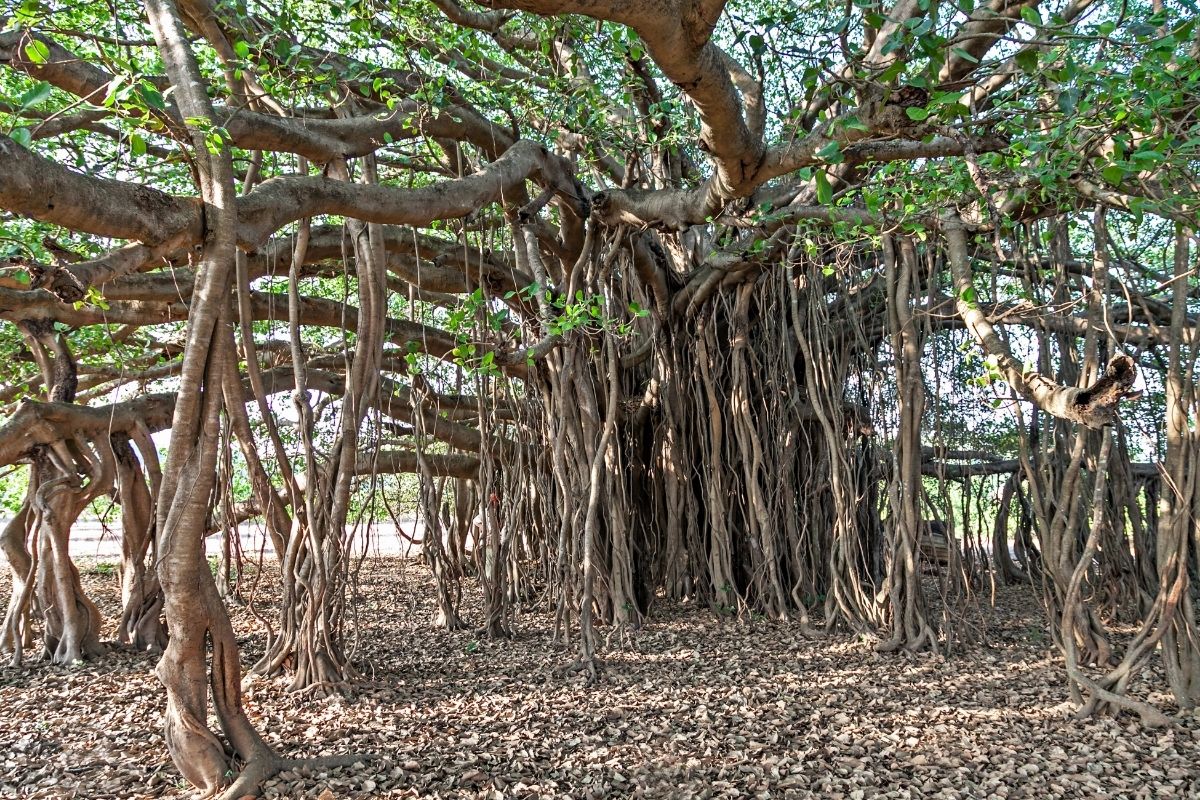
Banyans are trees native to many tropical regions of both Asia and Africa. As a type of Fig tree, Banyans have that classic fig characteristic of growing quite tall and growing very wide.
They grow up to 30 feet tall, with trunks often reaching 100 feet in diameter. In addition to their unique appearance, banyan trees feature many interesting properties.
The leaves are large and glossy green, and they turn red in autumn. These leaves are used to produce silk, which is an important raw material in weaving fabrics.
The flowers of banyan trees are attractive and fragrant. The fruit of the banyan tree is sometimes called a “banyan apple.”
This fruit is edible and is typically eaten by monkeys and birds where it is found in the wild. However, due to its fibrous nature, the fruit does not provide much nutritional value.
Banyan trees are also well known for their medicinal properties. The bark of the banyan is used in traditional medicine to treat various diseases.
The leaves of the banyan tree contain saponins, which are similar to soap and can be useful for cleaning wounds and treating skin infections.
7. Indian Gooseberry
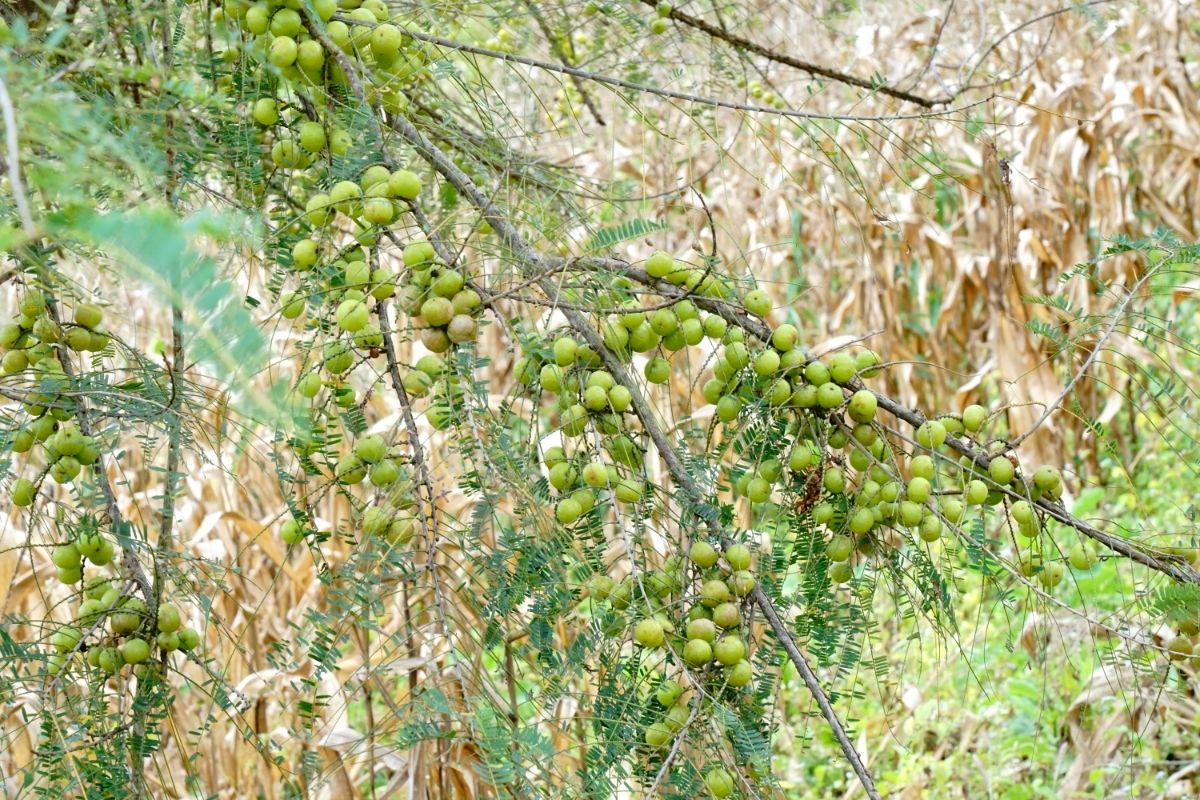
Also known as Amla, the Indian Gooseberry is a small to medium deciduous shrub native to India and Pakistan.
Its leaves are dark green and oval-shaped, its flowers are white, and its fruits are purple berries, each containing one seed.
This plant, as we already mentioned, tends to be a small or medium-sized shrub tree, usually growing between 1 and 8 meters tall depending on the environment and how it is maintained, although some cases of this plant have been known to grow up to 10 meters tall.
The most well-known use of the Indian Gooseberry is that the juices have been said to be effective as a treatment for those suffering from diabetes.
However, it has historically been used as a candied sugar syrup to sweeten other foods up.
8. Shisham
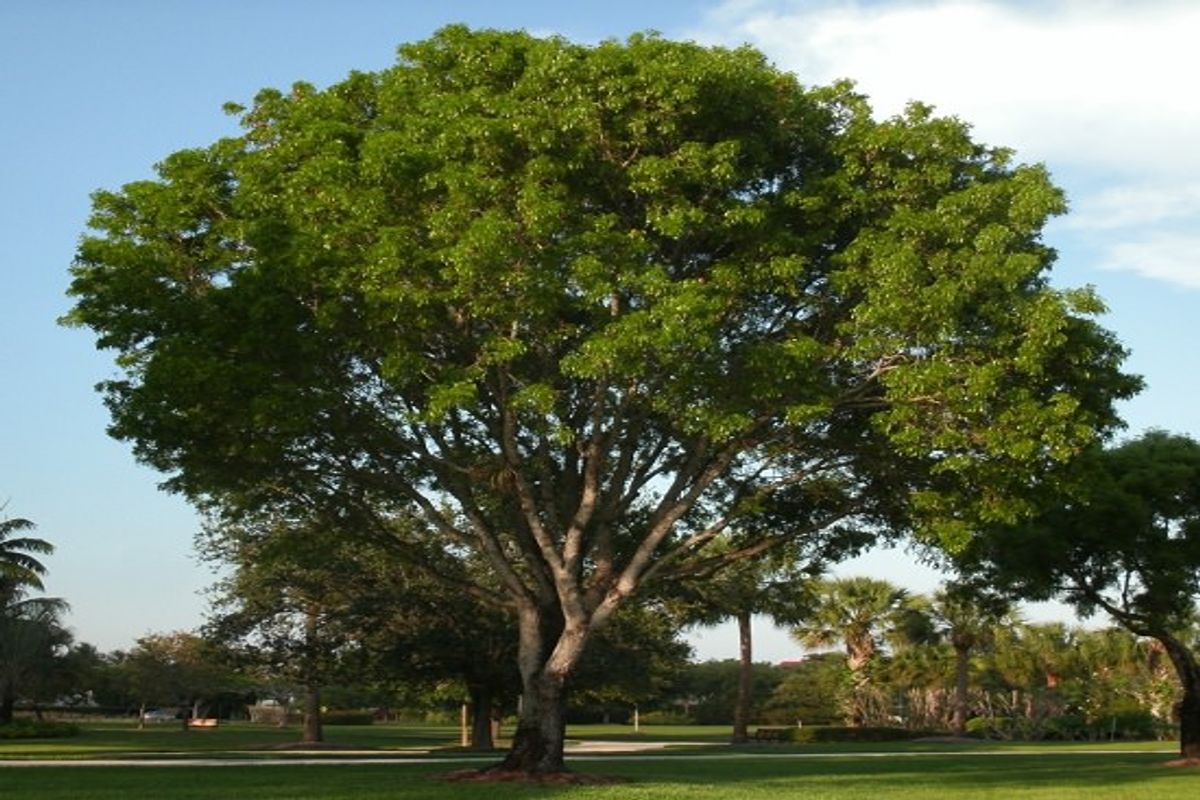
Also known as North Indian Rosewood, this tree is a fast-growing plant that is often found, unsurprisingly, in the North West of India, as well as in surrounding countries such as Iran and Afghanistan.
These rosewood trees can also be found in Sri Lanka, Myanmar, Thailand, Malaysia, Indonesia, and China. They grow naturally in tropical rainforests and are one of the most expensive wood types available.
They typically grow to around 22 meters tall, although heights of 25 meters (or 82 feet) are not uncommon either.
They are extremely durable and resistant to insects and rot. The timber is used for furniture, musical instruments, and luxury goods such as pianos.
9. Khair

Khair trees can be found in tropical countries such as India, Sri Lanka, Malaysia, Indonesia, Singapore, Maldives, Mauritius, etc.
In general, khair trees grow up to 50 feet tall. However, some varieties grow taller than this.
It is used as a part of local traditional medicines for treating various diseases such as asthma, cough, fever, cold, stomach ache, backache, headache, gout, rheumatism, malaria, diabetes, etc.
Khair trees are grown in tropical areas. They require warm temperatures. To grow khair trees, you must provide proper sunlight and water.
In addition to providing these two factors, you must give care and attention to the soil. The soil must be rich in organic matter and well-drained.
10.Ashoka
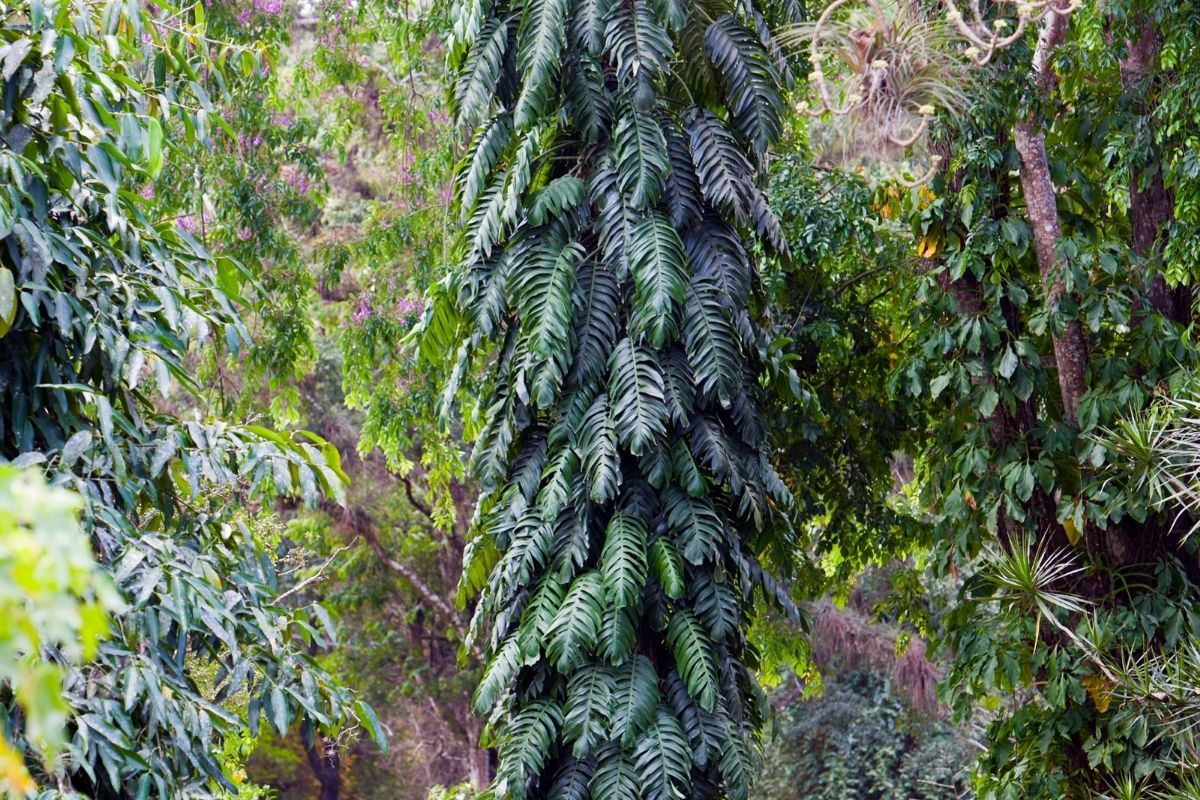
Named after the legendary Indian ruler, Ashoka trees are native to both India and Nepal.
They grow up to 25 feet tall. The tree’s flowers are known for their pleasant, fragrant smell, and growing in packed bunches across the tree.
Ashoka leaves are used regularly for food and medicine. Deciduous leaves are used for fuel.
The Ashoka tree can be found growing wild in many parts of Asia. In addition to its medicinal properties, the tree is known for its beauty.
It’s a common sight to see Ashoka trees growing along roadsides and highways in the countries where it grows naturally.
Although the Ashoka tree is native to Asia, it was introduced to North America in 1879.
Today, Ashoka trees can be found growing in parks, backyards, and public spaces across the United States, although they are still mainly found in and around South Asia.
Conclusion
These are just some of the trees that can be found in this large and incredible country. We encourage you to find out more about the other trees that we could not mention in this list, and to see whether you might even be able to grow them yourself!







